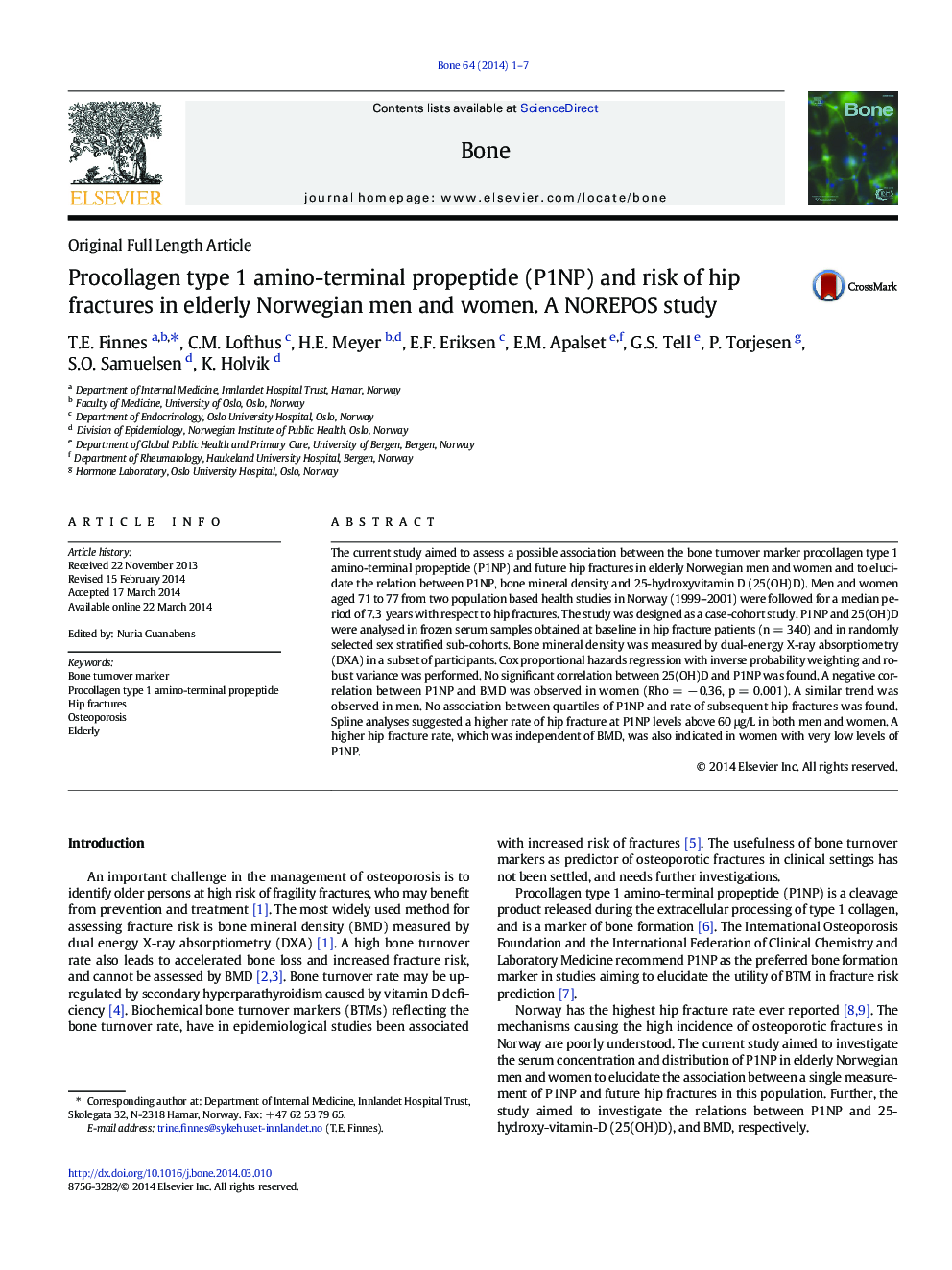| Article ID | Journal | Published Year | Pages | File Type |
|---|---|---|---|---|
| 5890041 | Bone | 2014 | 7 Pages |
â¢Possible association between procollagen type 1 amino-terminal propeptide (P1NP) and future hip fractures in elderly men and women was studied.â¢A negative correlation between P1NP and BMD was observed in women.â¢No association between quartiles of P1NP and rate of subsequent hip fractures was found.â¢Spline analyses suggested a J-shaped association between P1NP and hip fracture rate.
The current study aimed to assess a possible association between the bone turnover marker procollagen type 1 amino-terminal propeptide (P1NP) and future hip fractures in elderly Norwegian men and women and to elucidate the relation between P1NP, bone mineral density and 25-hydroxyvitamin D (25(OH)D). Men and women aged 71 to 77 from two population based health studies in Norway (1999-2001) were followed for a median period of 7.3 years with respect to hip fractures. The study was designed as a case-cohort study. P1NP and 25(OH)D were analysed in frozen serum samples obtained at baseline in hip fracture patients (n = 340) and in randomly selected sex stratified sub-cohorts. Bone mineral density was measured by dual-energy X-ray absorptiometry (DXA) in a subset of participants. Cox proportional hazards regression with inverse probability weighting and robust variance was performed. No significant correlation between 25(OH)D and P1NP was found. A negative correlation between P1NP and BMD was observed in women (Rho = â 0.36, p = 0.001). A similar trend was observed in men. No association between quartiles of P1NP and rate of subsequent hip fractures was found. Spline analyses suggested a higher rate of hip fracture at P1NP levels above 60 μg/L in both men and women. A higher hip fracture rate, which was independent of BMD, was also indicated in women with very low levels of P1NP.
